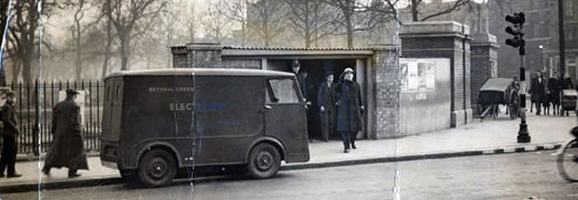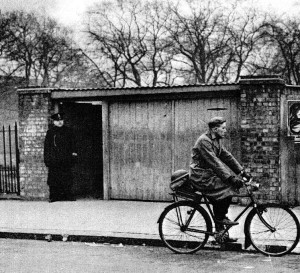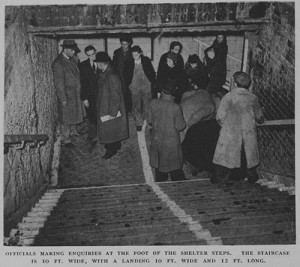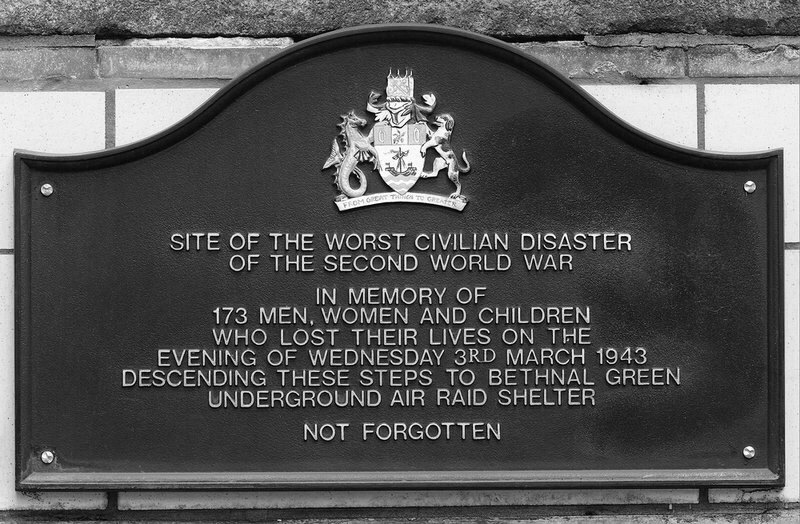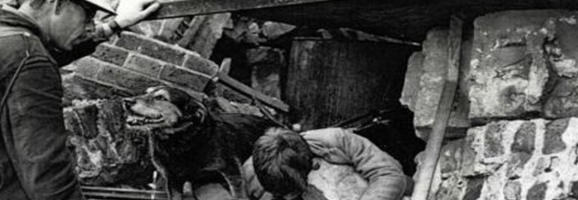
The air raid on the East End had been particularly fierce that night, and as Air Raid Warden Mr E King made his way across the rubble of what had once been a residential street on the outskirts of Poplar, he paused for a second. By his side stood Rip, a mixed terrier dog who stood stock still for a moment, nose and ears twitching, before heading unerringly towards a pile of still smoking bricks. Scrabbling his way over the broken masonry, Rip began scratching furiously at the shattered ruins and started to bark.
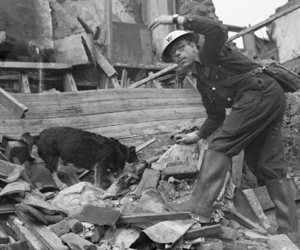
Rip – The Blitz Dog
The Warden called over some colleagues and they began the delicate task of removing the bricks and mortar. Rip wagged his tail, waiting patiently while the men dug down, before barking excitedly as they carried a dust covered and unconscious child to safety. Rip, the original search and rescue dog had saved another life.
Rip had been an air raid victim himself. It was in 1940 that Mr King, seeing the small dog in the debris left by a previous air raid, had thrown him a few scraps of food. Rip gobbled them down, and cautiously walked across to the man in the ARP uniform. Expecting the dog to leave, ARP Warden King began to walk back to his post, ARP Station B132 in Southill Street, Poplar. To his surprise, the little dog tagged along and a mutual friendship sprang up. The remainder of the ARP Station were delighted and adopted Rip as their mascot.
It soon became apparent that Rip had a talent for locating people trapped in bomb damaged houses. With no formal training, Rip took to his new role instinctively and he became the ARP Service’s first Search and Rescue dog.
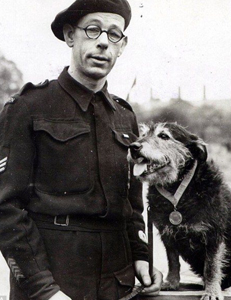
Rip with owner Mr E King
Rip the dog has been credited in prompting the authorities to train further Search and Rescue dogs as the war progressed.
In just twelve months between 1940 and 1941 Rip, the original rescue dog located over 100 victims of the Luftwaffe’s air raids.
At the end of the war, in 1945, Rip became a recipient of the Dickin Medal (often referred to as ‘The Animal’s Victoria Cross’). The citation that accompanied the medal read: “For locating many air raid victims during the blitz of 1940”.
He wore his medal on his collar until he died in October 1946. Rip is buried in the PDSA Cemetery in Ilford, Essex and his gravestone bears the inscription: “In memory of Rip, D.M., served with Civil Defence London. Awarded PDSA Dickin Medal July 1945. For bravery in locating victims trapped under blitzed buildings.”
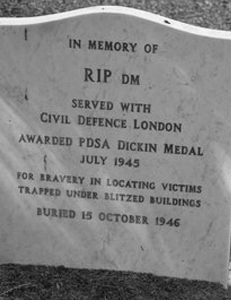
The gravestone of Rip
His body was the first of twelve Dickin Medal winners to be buried in the cemetery.
As a footnote, Rip’s Dickin Medal was sold by auction in Bloomsbury, London in 2009. Many commentators, including medal specialists, Spink Auctioneers of London, expected the medal to fetch around £10,000. However, as the auction progressed, it became apparent that Rip’s heroics had added much to the value, and by the time the auction closed, the little dog’s Dickin Medal had sold for a record £24,250

